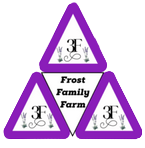Background
Basil is a herb staple to have in your spice rack or fresh in your fridge. Did you know that there are roughly 50 to 150 different species of Basil? The most common are Sweet Basil, Small or Dwarf Basil, Purple-Leafed Basil, and Specialty (scented) Basil. It originated in Asia and Africa, and is within the mint family. So, growing this herb is similar to how mint is grown. It likes full sun, drainage, and nutrient-rich soil with a PH level of 6 to 7 (slightly acidic to neutral). How do you get a lot of basil without buying a lot at the store or nursery? Well, by cloning!
Health Benefits
Basil is known for its numerous antioxidant and anti-bacterial properties from the oils. If Basil leaves are dried, then the oils dissipate. It is best to eat Basil fresh or frozen (even freeze dried). It can promote healthy skin (reducing skin infections), increase digestion (reducing bowel issues), and help with detoxing the body. This plant has numerous vitamins and minerals (e.g., Vitamin A and K, Calcium, Iron, Potassium, etc.) that also provide other health benefits to reduce chances of arthritis (inflammation), cancer, heart disease, and reduce overall mental (e.g., anxiety, depression) and physical stress (depending on the Basil Variety (e.g., Holy Basil). Be sure to check the specific benefits of each Basil variety.
Cloning
Cloning can be considered a tricky skill (depending on the plant), but basil is easy to root. The easiest way to clone basil is this: Cut a stem off the mother basil plant, but make sure not to take too many stems so the mother plant can survive and produce. Cut on a 45 degree angle, then place it directly into a cup of water that will get exposed to direct sunlight (either inside or outside depending on the outside temperature). That’s it!
If you want to ensure that it is rooting, put it in a see-through cup or glass. Change the water periodically so the water does not become stagnant. Make sure it has enough roots, but don’t let it sit in the water for too long (roughly over two weeks or until roots are established) or your new clone plant may die. More information on cloning and what tools to use will be available soon in our education blog and review section!
Harvest
You know it is time to harvest when the basil leaves are big and have a lush green hue. The easiest way to gather is by taking scissors and cutting the leaf stem right next to the plant’s stalk. Users can even use their fingers by pinching the leaf stem between their thumb and index finger (using their thumbnail to cut it). If you want your plant to live longer, cut off the flowers that grow from the top. This will prevent the plant from seeding, extending the life of your basil.
Recipe
Basil can be applied to many different types of food, and one of our favorite recipes to make with Basil is pesto. It only requires three main ingredients, but you can add whatever you’d like: Basil (of course), pine nuts, and olive oil. Wait…don’t you need a lot of Basile to make this? Yes, you certainly do. Simply grind the Bail leaves (even the stems) and pine nuts until they are like a paste. Then, add olive oil. For storage, ensure there is a thin layer of olive oil on top of the surface. This ensures the pesto will last longer, protecting it from air exposure. Feel free to freeze them in containers or ice cube trays. Clone as many Basil plants as a user prefers and start growing as much Basil as you want from one single plant!
Reference
WebMD. (n.d.). Health benefits of basil. WebMD. Retrieved March 3, 2023, from https://www.webmd.com/diet/health-benefits-basil

